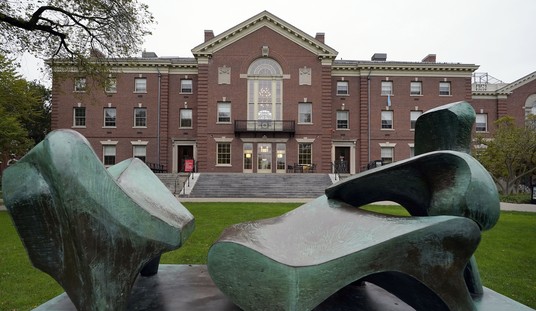Today’s yet another Wikileaks day, with disclosures from both the Washington Post and McClatchy on the war on terror that will make people say … “So what?” The Post story will get the most traction, but McClatchy’s may have more substantive heft with government documentation on the processes at Gitmo that show disarray in the initial attempts to determine how to gain intelligence from detainees, and whether some detainees belonged there in the first place.
The Post has the big headline, however, which promises “new details of Al-Qaeda leaders on 9/11”:
On Sept. 11, 2001, the core of al-Qaeda was concentrated in a single city: Karachi, Pakistan.
At a hospital, the accused mastermind of the bombing of the USS Cole was recovering from a tonsillectomy. Nearby, the alleged organizer of the 2002 bombing in Bali, Indonesia, was buying lab equipment for a biological weapons program. And in a safe house, the man who would later describe himself as the intellectual author of the Sept. 11 attacks was with other key al-Qaeda members watching the scenes from New York and Washington unfold on television.
Within a day, much of the al-Qaeda leadership was on the way back to Afghanistan, planning for a long war.
A cache of classified military documents obtained by the anti-secrecy organization WikiLeaks presents new details of their whereabouts on Sept. 11, 2001, and their movements afterward. The documents also offer some tantalizing glimpses into the whereabouts and operations of Osama bin Laden and his Egyptian deputy, Ayman al-Zawahiri.
Er … not really. The data goes back to 2003, which makes it eight years too late for it to have any “tantalizing glimpses” of the whereabouts of either man today. It’s also short on operations, too, except for some vague descriptions of plots that stalled thanks to American military attacks on the network and its hideouts. It does give a few glimpses, tantalizing or otherwise, at the quirks of the terrorist network and its leaders:
- Osama bin Laden was so broke that he had to borrow $7000 to go on the lam after the US invaded Afghanistan
- Abd al-Rahim al-Nashiri created a rift with Khalid Sheik Mohammed when Nashiri approved a plot on his own
- Nashiri reportedly took injections to promote impotence so he could concentrate on jihad
The only significant revelation in the report will probably be overshadowed by the “where were they?” aspect of the story. When Osama bin Laden had to flee, he put the Taliban in charge of AQ:
Mohammed later stated that while he and the others were in Zormat, they received a message from bin Laden in which he delegated control of al-Qaeda to the Shura Council. And the senior operatives began to plan new attacks.
That certainly puts a twist in efforts to get the Taliban to the negotiating table, especially if the delegation includes Jalaluddin Haqqani, who met with bin Laden in October 2001, presumably to coordinate efforts to fight the Americans.
McClatchy focuses on the Gitmo release, where there are a couple of interesting revelations:
The documents also show that in the earliest years of the prison camps operation, the Pentagon permitted Chinese and Russian interrogators into the camps — information from those sessions are included in some captives’ assessments — something American defense lawyers working free-of-charge for the foreign prisoners have alleged and protested for years.
There’s not a whiff in the documents that any of the work is leading the U.S. closer to capturing Bin Laden. In fact, the documents suggest a sort of mission creep beyond the post-9/11 goal of hunting down the al Qaida inner circle and sleeper cells.
The file of one captive, now living in Ireland, shows he was sent to Guantanamo so that U.S. military intelligence could gather information on the secret service of Uzbekistan. A man from Bahrain is shipped to Guantanamo in June 2002, in part, for interrogation on “personalities in the Bahraini court.”
Well, that sounds pretty damning — except that both could be explained in terms of hunting AQ. There may have been some indication that Uzbekistan’s secret service had been penetrated by either AQ or the Taliban; Pakistan’s certainly was. Some members of Bahrain’s ruling elite could have been providing financing to AQ as well. The US needed to shut down AQ’s flow of cash, and it’s possible that the interrogation of a man over the “personalities in the Bahraini court” might have had something to do with that effort, a possibility that McClatchy doesn’t even broach.
Mainly, these revelations don’t reveal much at all about AQ plots in the past, nor their operations today. The most recent data in either report is years old. They are both interesting for purposes of background information, but neither tells much of a story on its own or together that we didn’t already know.








Join the conversation as a VIP Member